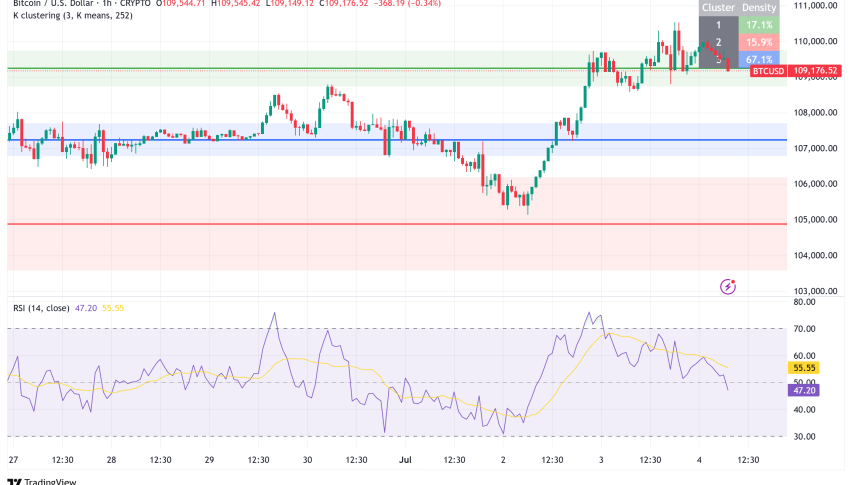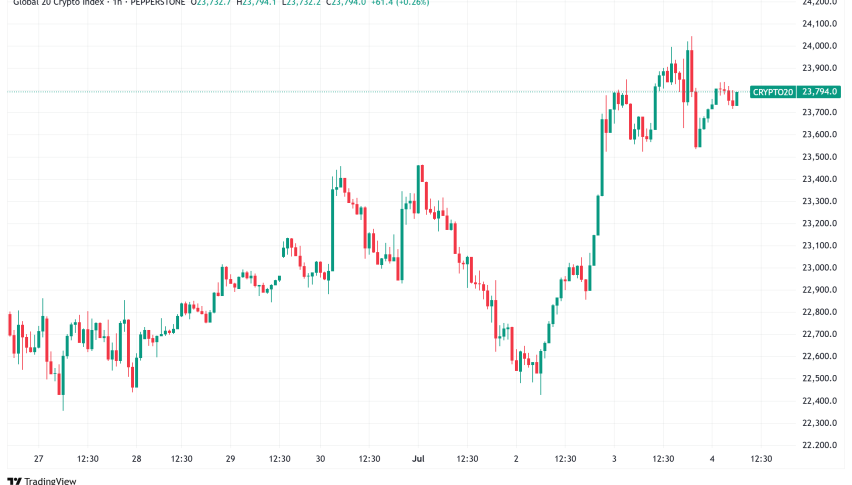Prices Forecast: Technical Analysis
For the daily forecast, Bitcoin is expected to close around $108,500, with a range between $107,000 and $110,000. The weekly forecast suggests a closing price near $109,000, with a range from $106,500 to $111,500. The RSI at 56.16 indicates a neutral to slightly bullish sentiment, suggesting potential upward momentum. The ATR of 2534.17 points to moderate volatility, which could lead to price swings within the predicted range. The MACD histogram shows a positive value, reinforcing the bullish outlook. However, the ADX at 11.40 suggests a weak trend, indicating that significant price movements may not be sustained. The pivot point at 108,888.84 is crucial, as trading above it could confirm bullish momentum.
Fundamental Overview and Analysis
Bitcoin’s recent price trends show a recovery from previous lows, with a current price of $108,466.64. Market behavior has been influenced by macroeconomic factors, such as retail sales data from Europe and PMI figures from Canada, which indirectly affect investor sentiment. Bitcoin’s value is driven by its decentralized nature, technological advancements, and increasing institutional adoption. However, regulatory challenges and market volatility remain significant risks. Despite these challenges, Bitcoin’s scalability and potential for expansion present growth opportunities. Currently, Bitcoin appears fairly priced, with potential for further gains if positive sentiment continues. Investors should remain cautious of sudden market shifts due to external economic factors.
Outlook for Bitcoin
The future outlook for Bitcoin remains cautiously optimistic, with potential for continued growth driven by increasing adoption and technological advancements. Historical price movements suggest a pattern of recovery and growth, although volatility remains a concern. In the short term (1 to 6 months), Bitcoin’s price could see moderate gains, potentially reaching $115,000 if positive sentiment persists. Long-term forecasts (1 to 5 years) are more bullish, with potential for significant appreciation as adoption increases and market dynamics evolve. However, external factors such as regulatory changes and geopolitical events could impact this outlook. Investors should monitor these developments closely to adjust their strategies accordingly.
Technical Analysis
Current Price Overview: Bitcoin’s current price is $108,466.64, slightly below the previous close of $108,859.32. Over the last 24 hours, the price has shown a slight downward trend with moderate volatility, as indicated by the ATR. Support and Resistance Levels: Key support levels are at $108,044.44, $107,622.24, and $106,777.84. Resistance levels are at $109,311.04, $110,155.44, and $110,577.64. The pivot point is $108,888.84, and Bitcoin is trading just below it, suggesting a cautious outlook. Technical Indicators Analysis: The RSI at 56.16 suggests a neutral to slightly bullish trend. The ATR indicates moderate volatility, while the ADX at 11.40 shows a weak trend. The 50-day SMA and 200-day EMA do not show a crossover, indicating no strong trend reversal. Market Sentiment & Outlook: Sentiment is cautiously bullish, with price action near the pivot, a neutral RSI, and moderate volatility. Investors should watch for any breakout above resistance levels to confirm bullish momentum.
Forecasting Returns: $1,000 Across Market Conditions
Investing $1,000 in Bitcoin could yield different outcomes depending on market conditions. In a bullish breakout scenario, a 10% price increase could raise the investment to approximately $1,100. In a sideways range, a 2% fluctuation might result in a value of around $1,020. Conversely, a bearish dip with a 5% decrease could lower the investment to about $950. These scenarios highlight the importance of understanding market dynamics and adjusting investment strategies accordingly. Investors should consider their risk tolerance and market outlook when deciding to invest in Bitcoin.
| Scenario | Price Change | Value After 1 Month |
|---|---|---|
| Bullish Breakout | +10% to ~$119,313 | ~$1,100 |
| Sideways Range | +2% to ~$110,636 | ~$1,020 |
| Bearish Dip | -5% to ~$103,043 | ~$950 |
FAQs
What are the predicted price forecasts for the asset?
The daily forecast for Bitcoin suggests a closing price around $108,500, with a range between $107,000 and $110,000. The weekly forecast anticipates a closing price near $109,000, with a range from $106,500 to $111,500.
What are the key support and resistance levels for the asset?
Key support levels for Bitcoin are at $108,044.44, $107,622.24, and $106,777.84. Resistance levels are at $109,311.04, $110,155.44, and $110,577.64. The pivot point is $108,888.84.
Disclaimer
In conclusion, while the analysis provides a structured outlook on the asset’s potential price movements, it is essential to remember that financial markets are inherently unpredictable. Conducting thorough research and staying informed about market trends and economic indicators is crucial for making informed investment decisions.



